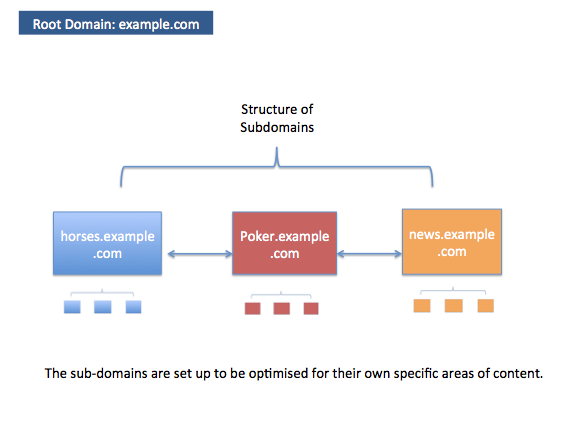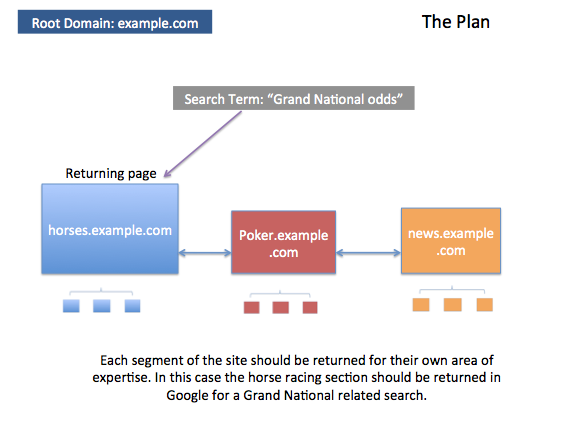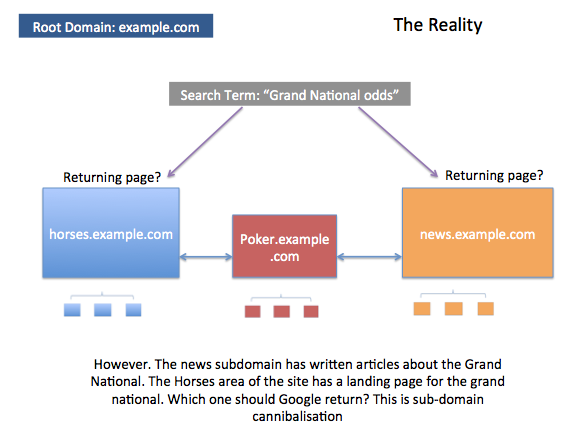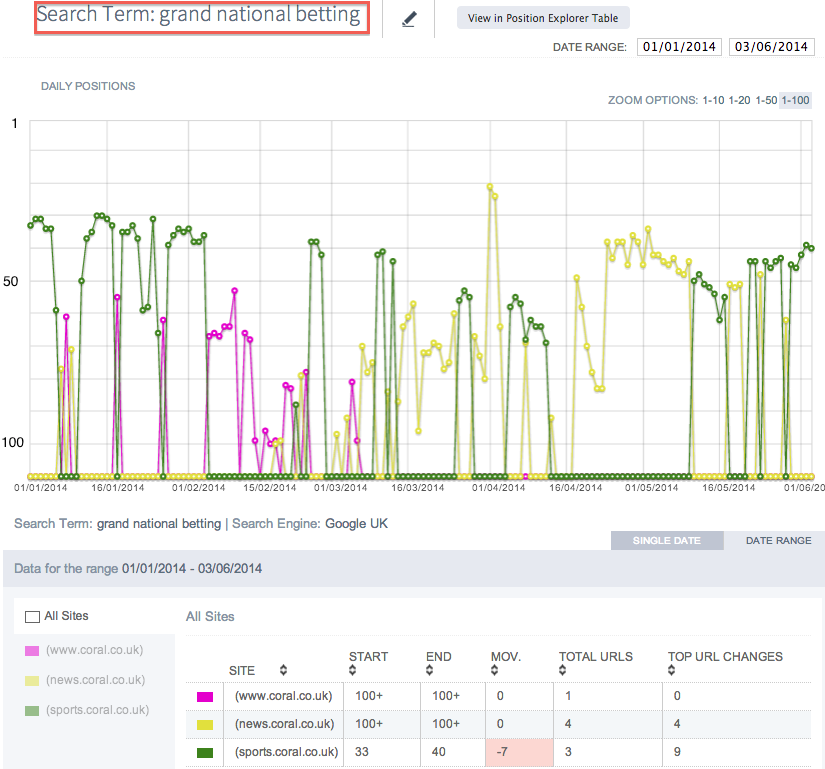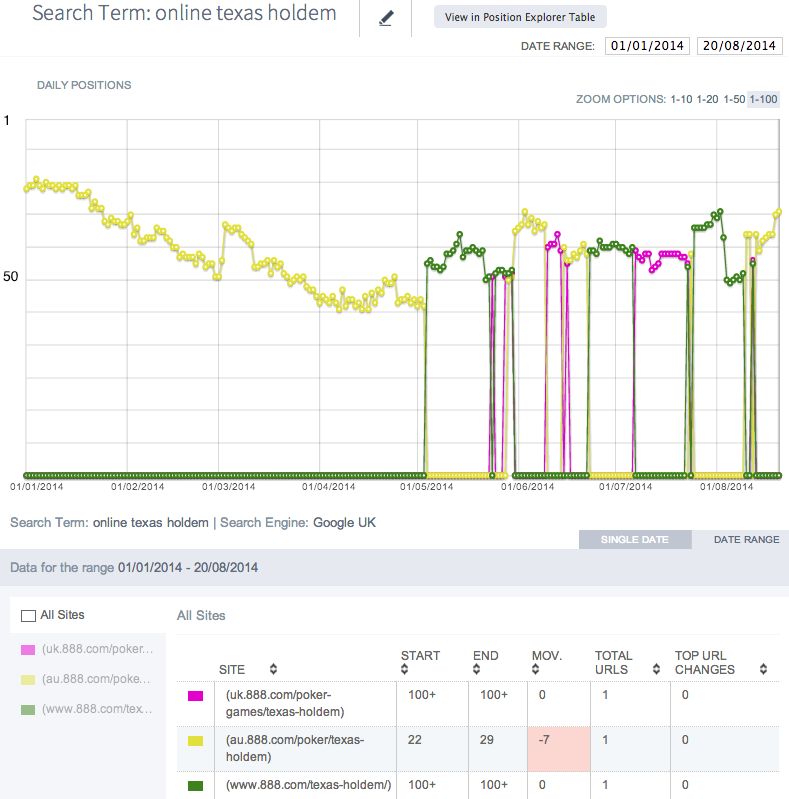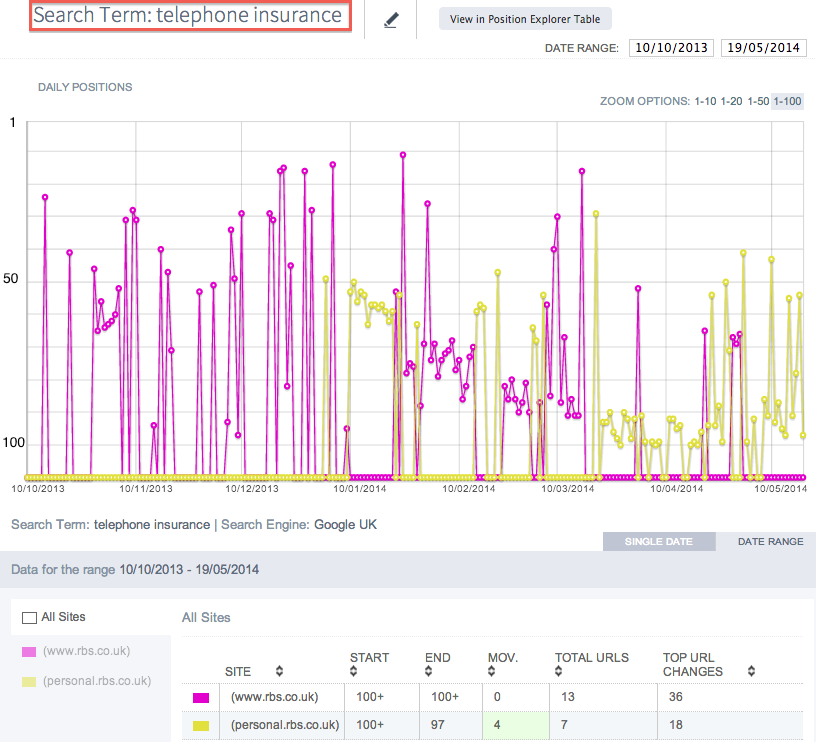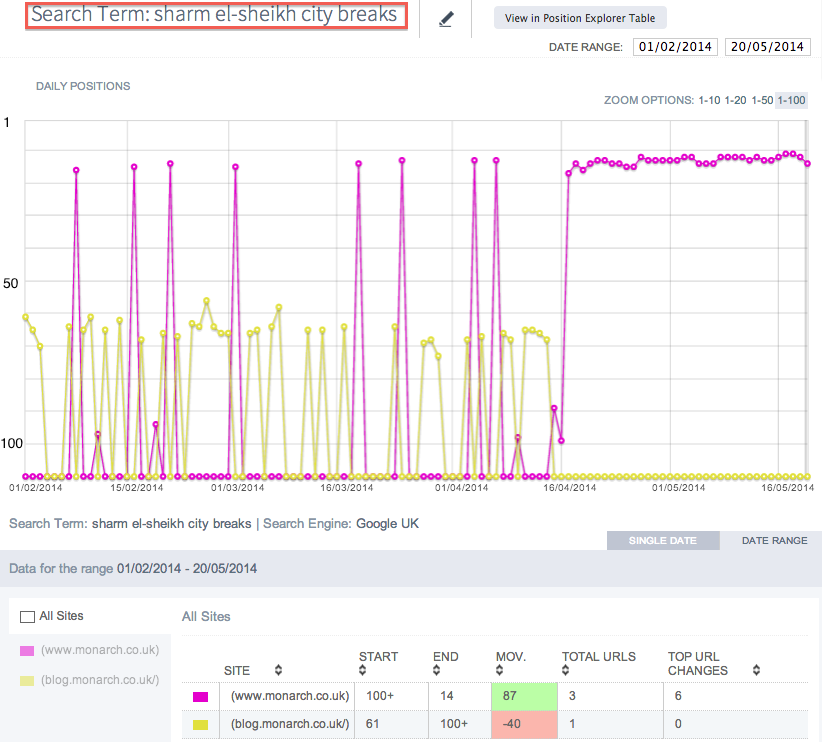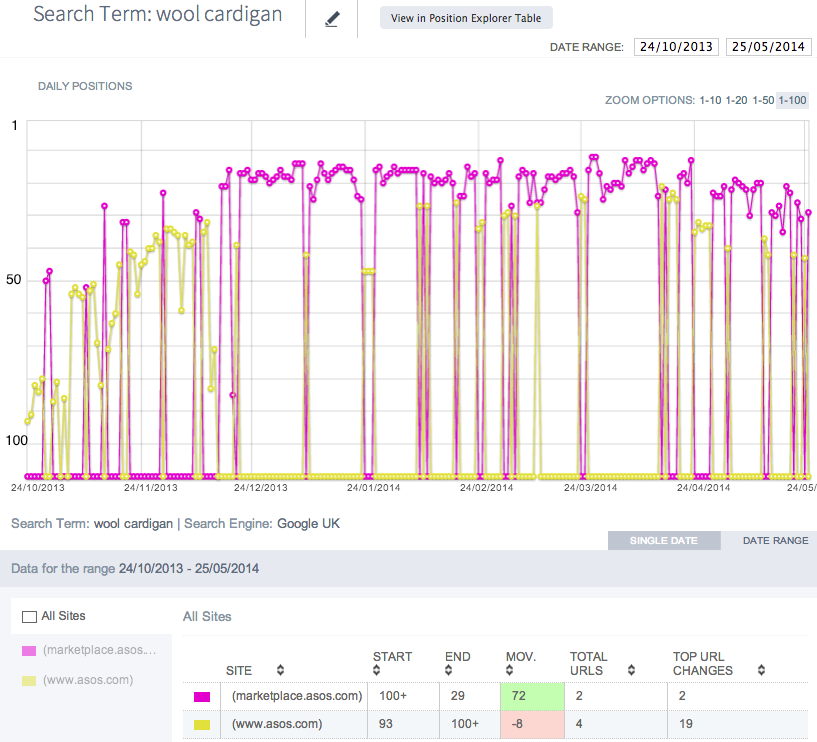Page no: P31z
Original: Your sub-domain strategy could be seriously harming your SEO
Is using sub-domains affecting your SEO performance? We get asked a lot of questions regarding the usage of subdomains in a URL strategy and site architecture. Such as:
- Is a url structure on sub-domains the right way forward?
- My sub-domains seem to be conflicting each other?
- Why is one sub-domain appearing in the results but my other sub-domains are not?
- Should I use sub-domains or sub-directory structure on my site?
In our series of blog posts we’ve identified 4 different types of cannibalisation or flux: 1) Internal keyword cannibalisation 2) sub-domain cannibalisation 3) International site and domain conflict 4) Family semantic flux
Here we talk about Sub-domain conflict and how a legacy strategy of sub-domains could seriously be damaging your SEO performance.
The best tool for identifying Sub-domain cannibalisation is without question Pi Datametrics.
Let’s go through the reasons behind using sub-domains and the possible issues they create in terms of SEO.
What is a Subdomain?Firstly let’s just explain what a sub-domain is. A URL structure can be based on sub-domains or subdirectories stemming from the root domain. So if the root domain is: http://example.com they could have their news section set out in one of 3 ways. 1) Subdirectory http://example.com/news With the subdomain structure, you can in theory go as far as you like e.g. company.news.example.com – But ordinarily the subdomain structure would continue with a subfolder after the initial subdomain. e.g. news.example.com/company. If we just concentrate on the subdomain version, then as it goes, new sub pages from news would still work in a subdirectory basis. By the way, www.example.com is a subdomain of example.com |
|
Why would a company use a subdomain strategy?A subdomain strategy is a clear way of demarcating a category of content or allocating departments their own space on the root domain. A few years ago many corporations instilled a website strategy based on sub-domains, this was done for a few reasons:
Different sections of the site are then demarcated to attract visibility from different types of searches. This is fine and can work in exactly the same way as a sub-directory. You just need to make sure that the different departments involved don’t duplicate content or theming – just as you would on a sub-directory strategy. However sub-domain cannibalisation can occur when those different departments are focussing on the same content or a search term that is used is very general. This cannibalisation will hamper the site and lose positions. (This can happen with sub-directories too by the way). See example below. |
|
The end of clustering of results in GoogleIn the vast majority of searches Google will only place one domain in the main bulk of the results. Yes, some sites in some searches will get multiple places in the top 100 (and maybe even 2 in the top ten) but this is not assured for many of the most competitive searches. A couple of years ago Google’s algorithm was misfiring (to say the least) and the results would show multiple results from one site. For example if you did a search for “cheap flights” almost two-thirds of the top 100 results for this would be the domain cheap-flights.co.uk. This obviously was not right; for both the user (who may have wanted more than just one site to choose from, and for the plethora of businesses that offer cheap flights. So the two flaws were that there would be 1) Many results from the same domain offered in the SERPs 2) A higher proliferation of keyword rich domains in the SERPs, this included exact match domain (EMD) and partial match domain results (PMD) – meaning if the search term was featured in the root-domain such as “cheap flights”, Google would give that a far greater weighting. This flaw in Google’s searches was therefore greatly abused by marketers and SEO practitioners. Many corporations would set up multiple urls (including sub-domains) and purchase as many keyword rich domains as possible. I did the same. I went to the Go-Daddy auction pages and bought several sites across multiple industry verticals. |
|
Examples of Sub Domain conflict and CannibalisationIn the same way that no sector is safe from normal internal cannibalisation, any site that has used a sub-domain structure could face sub-domain cannibalisation. The gambling sectorThe gambling sector is rife with sub-domains. This is probably a legacy for two reasons. First many within the sector tried to have multiple results for a single search result thus stuffing sub-domains in the Serps. Secondly, gambling companies have a history of rigid P&Ls across their different departments, so the sports section will be separate from the casino section. Above Coral have three sub-domains that are appearing for the term “Grand National Betting”. This is therefore a 3-way sub-domain cannibalisation. This is one of the biggest terms in the horse racing calendar. However the problem is, is that these subdomains are not working together to feature for this term, in fact they are working against each other with the news page releasing content that impacts on the Sports’ landing page. |
|
| Above we see a 6-way subdomain cannibalisation. Everything is in there on this Ladbrokes example for the very general term of “Place Bet”. Obviously this search term could be relevant across many different areas of the corporation hence the massive conflict. Notice how there is even an FBG sub-domain in there, which is a promotional pop-up page. | |
| In the above example 888 are in a right mess with their separate geographical sub-domains (this shows Australia) appearing in UK searches. | |
The finance sectorAs is typical with many businesses that offer both B2B and B2C offerings, they like to separate the services with different assets, designs and tones of voice. The Finance sector is typical of this and especially banks. Here we see a mix up on the RBS and Nat West sites (no surprise that they have the same issues), where the business banking subdomain is conflicting with the main site. |
|
The travel sectorAs with all sites, putting a blog or a news page on a sub-domain can cause major cannibalisation issues with the rest of the site. The news pages have their own internal linking structure, separate tags and menu bars. These major category terms are also likely to appear in the main bulk of the site. So which one does Google choose to be the primary returning page? This is a difficult area, as on the one hand we are all told that blogs are good and deliver more content. But if they are impeding the rest of the site and the main category pages then it’s definitely troublesome. See how the blog sub-domain on the example below is pulling down the main site with this search term “Sharm el Sheikh city breaks” |
|
The fashion retail sector:Many retail companies choose to have a separate domain (usually a sub-domain) to re-sell their end-of line products. The problem is, is that the primary site and the secondary site will be themed similarly to each other for example the old product would be a “wool cardigan” the new one would, no doubt be a more contemporary design, but nonetheless be a “wool cardigan”. |
|
What Google says: How does Google deal with subdomains and subdirectories?Google stated, through their spokesman Matt Cutts, that subdomains and subdirectories are “roughly equivalent” – in that Google sees it all as one domain either way. Historically Google would offer up separate results for separate subdomains, so that if there was relevant content available for a general search then multiple subdomains would feature in the SERPs. However, due to the fact that this practice was ultimately being abused Google now “scrunches” those results together. In terms of direction on strategy, Cutts states that “whichever one makes you happier you should go for that one”. |
But we believe it’s not as simple as that. Using subdomains, with similar theming (even the very top level terms) can seriously damage your performance.
Tags: subdomain
See more for